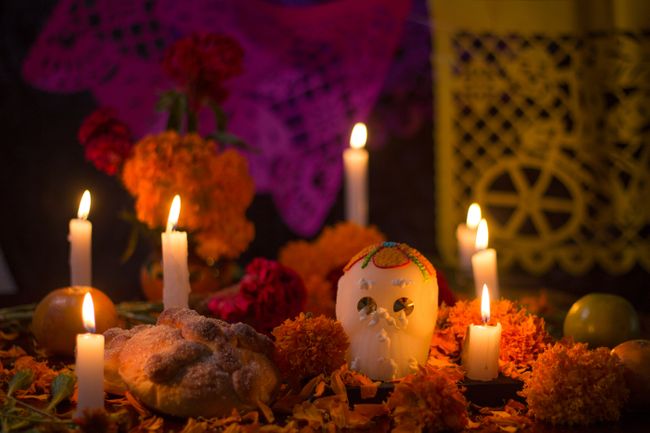“This village has a rather unusual tradition,” said Benjamin, sensing my bafflement.
“Here, the spirits of those who have died this year always go home instead of to the cemetery for their first Day of the Dead, and this year there have been three deaths in Santa Fe de la Laguna.”
We walked the short distance to the home of Dalia Fabian Luciano and through her open front door. She was sat beside the ofrenda dedicated to her young daughter, Gema, who had passed away just four months prior.
A photo of the beaming girl was placed at the head of an avalanche of fruit and flowers, sweet rolls, cans of Coca-Cola and a rocking chair – her favourite toy.
It felt wrong to be here, prying at a deeply personal and, presumably, painful moment. I shifted on the spot and tried to inch away but Dalia beckoned me closer.
I knelt beside her and she told me all about Gema, the games she played and the things she loved.
I added my own contribution to the ofrenda: a freshly baked iced bun. “I can feel her next to me,” she whispered.
It was then that I finally began to understand what this night was about: a connection.
The relaxed atmosphere of Santa Fe de la Laguna paled in comparison to the carnival-like spirit of nearby village Arocutín.
Outside the whitewashed church, bands played loudly, shots of warming tequila were free-flowing and a game of hockey, using a flaming wooden ball that hurtled through the air like a meteorite, was in full swing.












